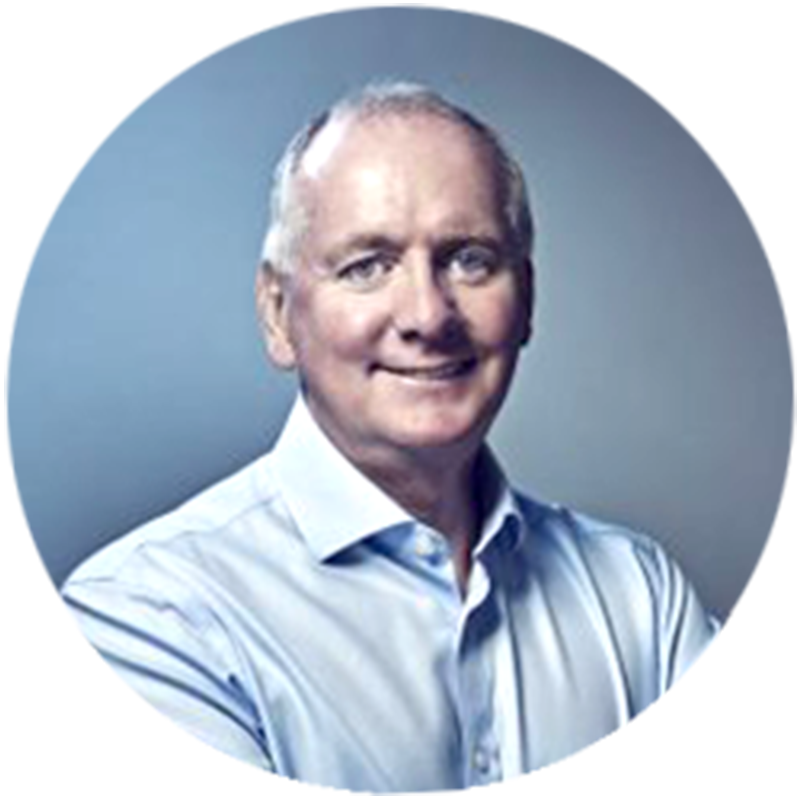Highlights of the Q&A include Mark explaining the importance of well-structured regulatory compliance frameworks in managing risks, offering his insights into the impact the 2022 rule changes will have on the sport, letting us in on his best memories from his F1 career so far, and much more.
Would you agree that while motor sports are ‘high risk, high reward’, some teams (just like organisations) are consciously more risk averse than others both on and off the racetrack? If so, what are your views on where this stems from?
The risk-averse teams never win in Formula One – the ones which embrace and manage risk are more likely to try new things, innovate in ways both small and large, and ultimately drive competitive advantage. It’s the difference between participating and competing. Every team participates in F1, but few truly compete to win. The cost of performance development is often cited as a reason, yet in my experience, even a small, underfunded team can disrupt, try counter-intuitive solutions, and upset the big guys. This is why I always enjoyed working for a ‘challenger’ team. The other factor is ‘fear of failure’. Teams that have a blame culture drive to such a degree of fear that everyone minimises their contribution and hides their mistakes, whereas those which thrive on creating a learning environment of continuous improvement have a degree of openness, honesty, and transparency which promotes creativity and innovation, and taking risks, in a controlled way.
Are Formula 1 teams using Risk Scenario Analysis as input for their strategic decision making?
F1 teams do use Risk Scenario Analysis and specifically seek to embrace risks, so that instead of saying “it was just one of those things”, we actually plan for every eventuality. For example, a pit stop that goes wrong, a competitive behaviour that was unexpected, an accident or technical failure on any given lap. Big Data has long since lost its lustre, since most of the time most things are working well. So, the focus is on the key opportunities and risks with real-time data, allowing us to respond quickly to trends, diagnostic analysis of systems, and a range of critical items (e.g. tyre temperature is a key one to keep an eye on!). I work closely with one of F1’s senior data scientists and he developed the algorithms used by 50% of the teams today. There are just too many variables for the engineers to contend with, whereas AI can give us faster, higher quality outputs. Usually, the only problem is human engineers arguing WITH the data!
With a business where risk is so inherently embedded in the whole team’s roles and responsibilities. What do you see as the role of the risk manager to be?
The risk manager ensures the whole team has an agreed strategy in that regard – what we will and will not do. The organisation has to get behind that strategy, so it’s not the risk manager who shoulders the burden of responsibility – the whole company has that task.
With the budget for teams coming up next year, do you think the risks will increase as teams have to make choices?
This is a good question and there is no doubt that prioritisation has become even more important. Fortunately, our use of digital twins means that we really do not produce any physical technologies or upgrades unless we have seen a clear cost/benefit in the digital analysis we undertake. This has reduced cost/wastage enormously.
With new regulations in 2022 will the ability to acquire and analyse data to determine risk and strategy be the differentiation between teams, or is the design component still the most important?
Design philosophy and execution will ultimately determine baseline performance which will then evolve thanks to data analysis and product development. At the moment (Nov 2021), all the teams are simulating their design performance for next season, but of course, they do not yet know whether the competition is better, worse, or the same. We will find out in the first week of testing in February!
You speak of drivers (i.e. the ‘local manager’) needing to follow the decisions and directions of a centralised strategy team (‘Head Office’). Many organisations suffer such cultural tensions – ‘What does Head Office know?’ How is this cultural & behavioural risk – of fact-based decision-making eroding local engagement – managed in F1?
Great question because we see this issue all the time and that’s why we have our twice-daily briefing meetings with all the key stakeholders so that no one can say “I am not on board with this”. We encourage debate and discussion (even disagreement), but once the strategy is agreed upon we really do need everyone to pull in the same direction. If we lose, we loop back to question what we have learned, and by applying this process of continuous improvement everyone recognises that we the organisation constantly on a trajectory of trying to improve performance. The nature of the briefings is often robust, but by ensuring honesty and respect for one another we aim to avoid falling into trap of believing one part of the business is more important than another.
In terms of Lewis’s last race (Istanbul 2021), the team strategy influenced Lewis’ race. Would you say that such technology risk is something to look out for?
Lewis agreed with the strategy going into that race, including the engine change which led to a grid penalty, as they had to decide where to take that penalty in order to give him the best chance over the balance of the season. Unfortunately, the race did not work out as planned as his intermediate tyres started to lose greater levels of performance than he and the team hoped. The weather has a profound effect on performance & risk, so the balance is a difficult one and Mercedes admitted their ‘hope’ was not delivered. I would say that the takeaway from that race was not that technology introduces risk, but human emotion does – the tendency for individuals to introduce ‘hope’ rather than being brutally honest about what the data is showing!
What is the importance of a well-structured regulatory compliance framework in managing risks?
This has been a key part of Formula One’s shift towards having a far safer sport today. Previously the rules were too relaxed, the regulator did not have the resource needed to police the industry and as a result the teams just focused on innovation and performance – at any cost. Corners were cut, and risks increased. Today the regulator and teams work together, recognising that catastrophic failures damage the entire industry and every company within it. The rules are very much focused on de-risking the sport while leaving room for innovation in certain areas. Controlled innovation to some extent.
Do you apply Monte Carlo Simulation to develop race strategy or have things moved on?
Initially, F1 teams operated to rather deterministic models, but McLaren’s Neil Martin was the first to embrace a stochastic approach and his use of Monte Carlo theory began the revolution in race strategy modelling that continues to this day. Typically, we have strategists running mathematical modelling for each driver/car, then a two-car team approach and modelling that against – primarily – our major rivals. Mercedes tends to model its races against Red Bull, McLaren and Ferrari – the rest of the field is not going to be racing to win – and the process starts with available data, 3 months before a race. As we near a race weekend, the data evolves – from recent races/outcomes/events – and then on Friday and Saturday, we gather data from the current weekend which should (in theory!) allow us to go into the race on Sunday with a high degree of confidence of optimal strategy (plus a Plan B, C etc, under certain scenarios).
In terms of the use of digital twins to model scenarios, it obviously is a game-changer in terms of identifying and reducing risk. But how costly is it to do this right?
It’s impossible to put a figure on it but there is no question that our digital strategy has enabled us to save time and money on outcomes that would otherwise have increased risk. We run an analysis of R&D projects, for example, which gives us an accurate picture of the cost/benefit of any particular programme, and the risks associated with it. In an environment of resource scarcity (all F1 teams now operate to the same budget cap) every dollar has to be spent wisely, and risk mitigated.
How do driver contracts and insurance policies work in F1 and help to manage risk?
Formula One driver insurance is prohibitively expensive because even if the sport is much safer these days, the reality is that drivers are much less likely to be killed, but perhaps more likely to suffer a life-changing injury. This can lead to life-long medical care. As a result, a driver is, in part, well paid to compensate them for the risk inherent in what they do, and insurance generally covers their families for the eventuality of a fatal accident.
Many companies still think laws and regulations are choices. What is your experience in this in F1?
Wow, what a question! Compliance is non-negotiable. You cannot be a little bit legal. Back in the 1970s, 1980s, and 1990s, some people in F1 saw regulations as an area to be circumvented. Cheating dressed up as ‘innovation’. That’s no longer tolerated, either by the regulator or the teams, and for very good reason. Our sport is very public and our business relationships are critical to our survival, so the reputational damage which would come from choosing to avoid the rules could be an existential threat.
Does the surveillance of laws and regulations come before the product comes to market or when the product is already on the market? Currently, product surveillance is when the product is already on the market. What is your belief in this?
We ensure full compliance before the product is delivered, and we check innovations with the regulator. In Formula One it is such a waste of money, time, and reputation to launch first and check later.
Is it possible for the larger team drivers for constructors such as Mercedes and Red Bull to be safer compared to relatively smaller constructors such as Williams or Alpha Romeo?
Safety is not an area of competitive advantage. Safety systems, processes, and technologies are shared so that we don’t have islands of excellence in oceans of mediocrity. We really don’t want Mercedes to be great at safety and Haas to be poor at it. Everyone works with the regulator to ensure best-in-class capability and all teams sit on the Safety Working Group.
At what point are you comfortable with the 2022 new rules, and their impact on performance and safety?
I do not believe safety will be compromised, because it is so central to the regulatory, technical, and operational framework. The performance outcome has been estimated quite precisely, although, in my opinion, the leading teams will achieve a far higher level of performance than the regulator intended. In resetting the regulations, I suspect the large teams will ultimately benefit more than the small ones.
Is there a minimum % of the annual budget requirement that each F1 team must put towards annual WHS management?
No, there is not a minimum annual budget but since the regulations demand certain technologies, equipment, systems, and processes are in place (and are checked) this ensures that standards meet a baseline requirement across the industry.
In the 2019 incident involving Romain Grosjean, you mentioned that the controls put in place saved his life. But the fact that a major accident happened questions the level of risk prevention controls practised to avoid such an accident, especially by the track curators. Does this vary based on track?
Every track is built to a template, including track dimensions, the curvature of corners, and lengths of straights (to control maximum speed). However, in the case of Grosjean’s accident – caused by him cutting across the track and touching another car – it led to a very high energy impact, which we plan for. We know that, particularly when you have a rubber-tyre contact with another rubber-tyre, the car can move into a completely new and uncontrollable trajectory very quickly. This is why we line the entire track with barriers. We try to prevent these kinds of accidents by enforcing rules on driver behaviour, but in the case of Grosjean’s accident, we saw an incident of precisely the kind we plan for. The one exception was the barrier failure – which led to an investigation into the barrier’s age, design, and installation. It should not have opened to the degree it did.
How did constant innovation in technology change the way decisions were made throughout your career in F1?
We moved from decisions based on personal experience and education – combined with all the human biases and ‘group think’ that we used to see – to a much more data-centric analysis of problems that have enabled faster, higher-quality decisions. The digital transformation of the sport has revolutionised every aspect of our business. Today we have the most reliable, safest, most energy-efficient, and yet highest-performing cars of all time.
Looking back on your career in F1 so far, what is your best memory?
Meeting my wife at the Australian Grand Prix in Adelaide in 1991 (3 days to make a decision…), followed by my team’s first Grand Prix win in Belgium in 1998 when we finished first and second. By sheer coincidence, we had all our factory staff on a trip to that race, our fan club in attendance, and every CEO of each of our sponsors with us. It was quite a party.
What’s the most stressful aspect of working in F1 from your perspective?
The relentless nature of the business means 24/7 thinking about work if not actually doing it! There is no time of year when teams can relax – there is no ‘off season’ – in fact, the winter is the busiest time at the factory when the old season is finishing, and the new cars have to be built and tested in February. But it is the same for everyone, including our competitors.
If you’d like to hear more from Mark and his fascinating insight into F1, both sessions of the webinar series, Formula 1: Risk Management in the Fast Lane, is now available to watch on demand here.









